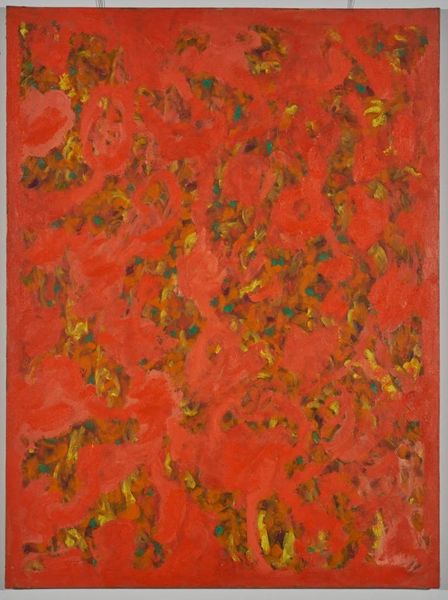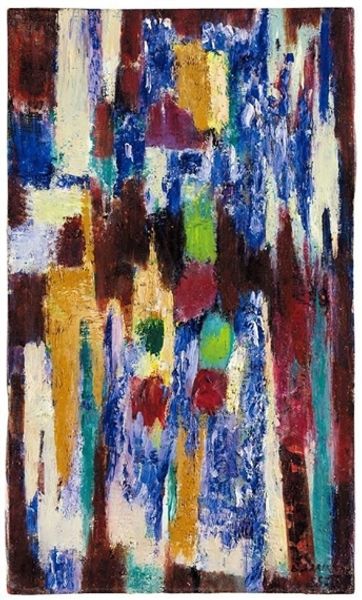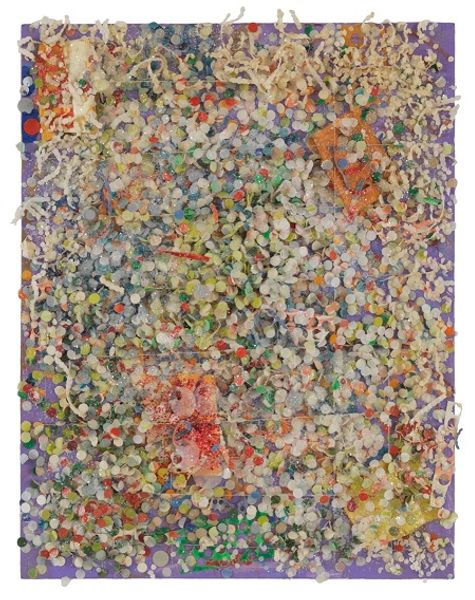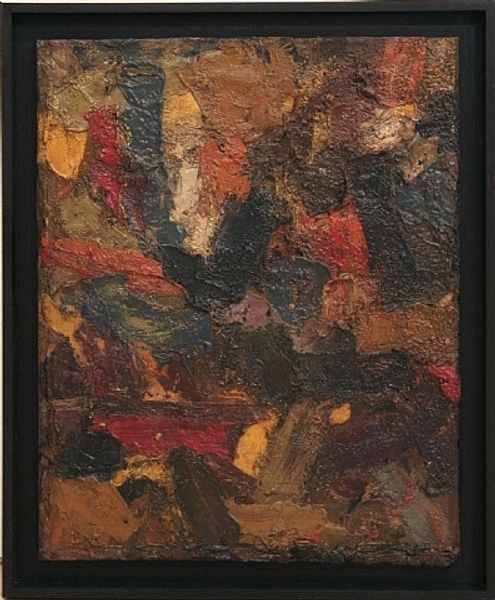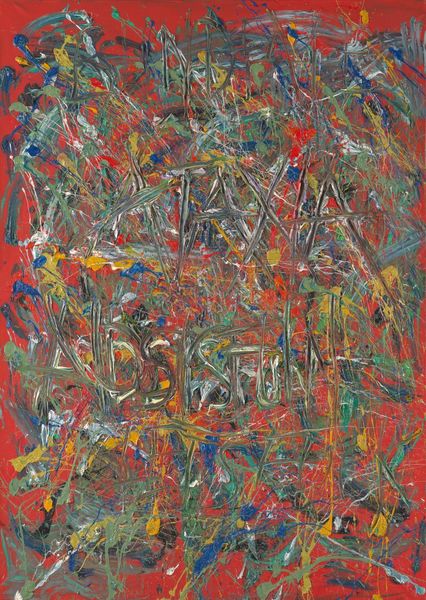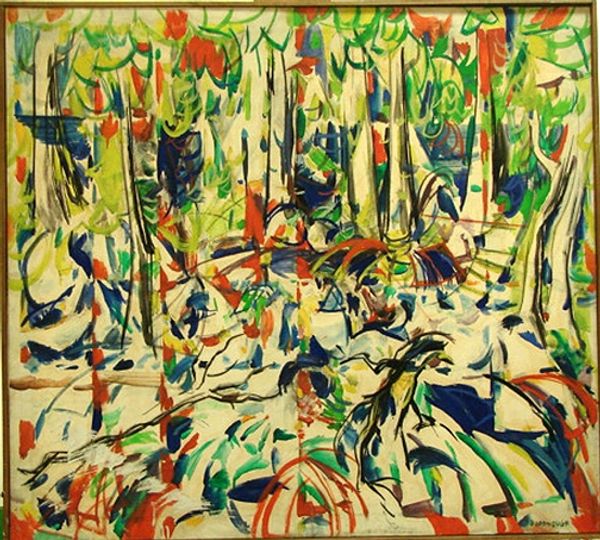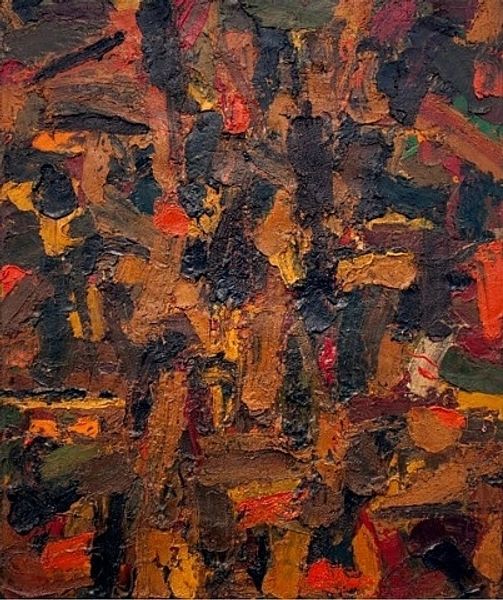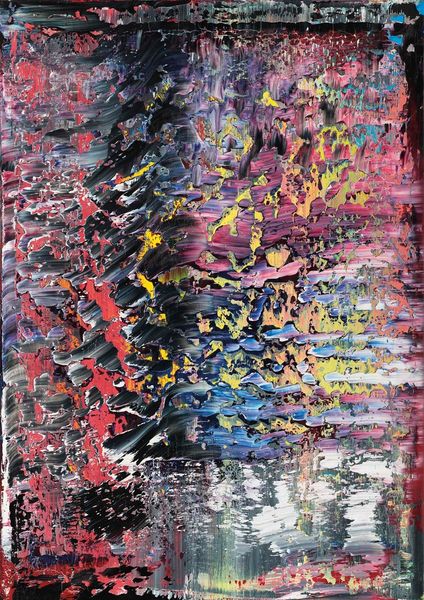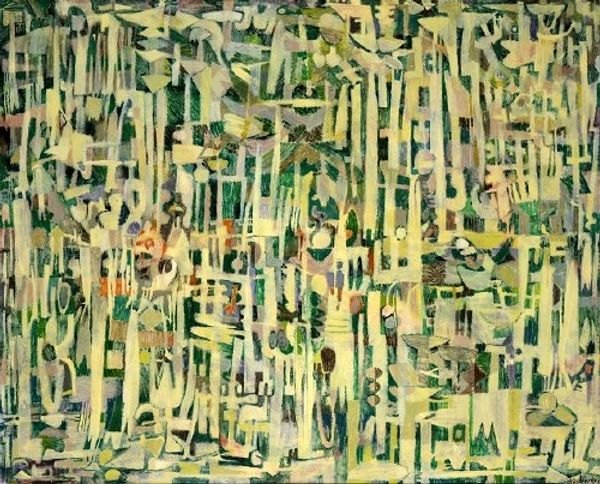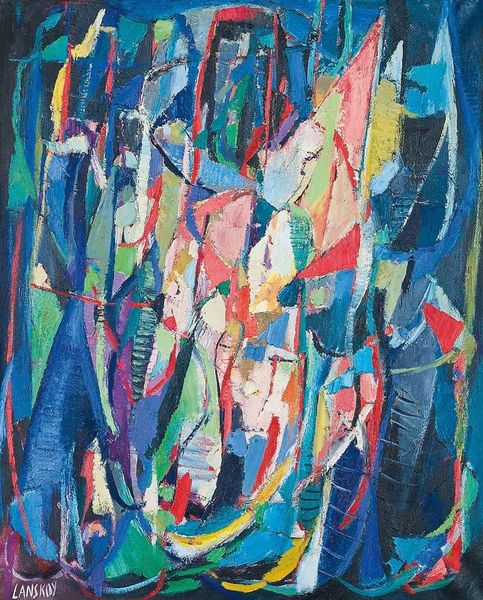
matter-painting, oil-paint, impasto
#
abstract-expressionism
#
abstract expressionism
#
matter-painting
#
oil-paint
#
form
#
impasto
#
abstraction
#
allover-painting
Copyright: Milton Resnick,Fair Use
Editor: Here we have Milton Resnick’s "Abstraction," created in 1963 using oil paint, with what appears to be an impasto technique. It strikes me as a very turbulent landscape, like a field overwhelmed by intense colour. How do you interpret this work? Curator: I see it as a powerful rejection of the social and political climate of the early 1960s, channeled through Abstract Expressionism. Resnick’s all-over painting style disrupts the traditional notions of figure-ground relationships, challenging the established hierarchies within art, but also within the broader sociopolitical context. Do you see the density of the paint as an active gesture, or perhaps even a kind of resistance? Editor: That's interesting, I hadn't thought of the impasto as resistance! The thick paint definitely adds to that sense of being overwhelmed, like a refusal to be contained. Is that tension a common theme in abstract expressionism of that time? Curator: Absolutely. Artists were grappling with societal upheavals. Consider how many were concerned with existential anxieties and social injustices and translated these concerns into abstract forms. The lack of clear, representational imagery becomes a statement in itself, denying easy consumption or co-option by dominant ideologies. It’s like Resnick is saying, "I will not give you a simple picture; I will give you the complexity of feeling.” Editor: I'm starting to see how the very form of the work becomes a political statement. This makes me think about other artists and their way of expression to change our perspectives. Curator: Precisely! Thinking about art in relation to these broader narratives empowers us to critically examine the world around us. Editor: Thank you, this has certainly helped me to appreciate it on a new level. Curator: My pleasure! Let’s continue this exploration with the next artwork, keeping an eye on those disruptive voices within art history.
Comments
No comments
Be the first to comment and join the conversation on the ultimate creative platform.
